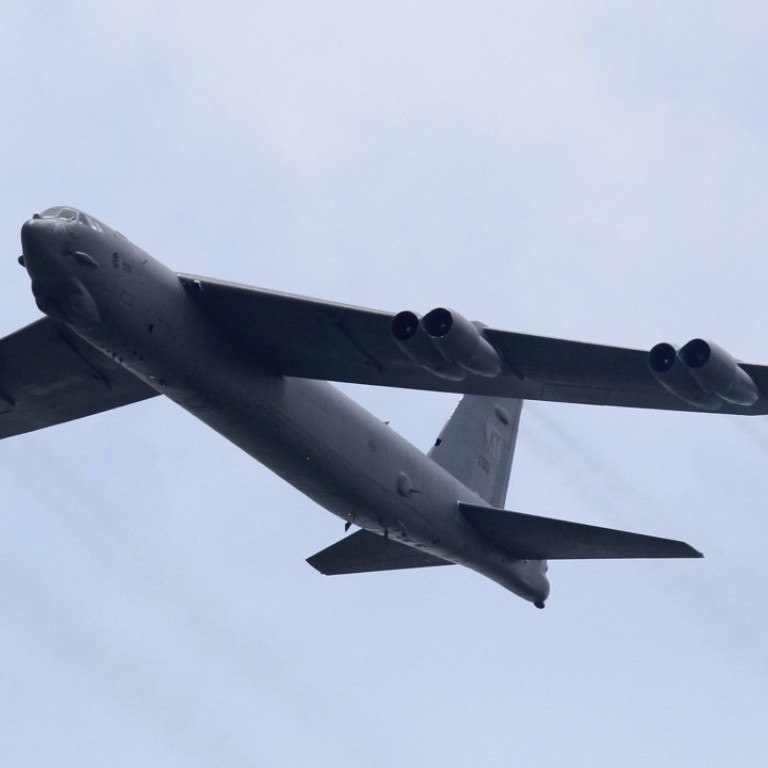
US bombers fly near South China Sea in ‘routine training mission’
- Tensions on the rise between Beijing and Washington over resource-rich area
- Flight occurred on the eve of Chinese President Xi Jinping’s visit to the Philippines
Two US Air Force B-52H bombers flew near the contested waters of the South China Sea on Monday, in what was described as a routine training mission.
The two B-52H Stratofortress bombers left Andersen Air Force Base in Guam and flew “in the vicinity of the South China Sea”, according to a statement issued on Wednesday by the US Pacific Air Forces.
The statement said Monday’s flight was “consistent with international law and the United States’ long-standing commitment to a free and open Indo-Pacific”.
United States ‘won’t give in to China’ on Taiwan or South China Sea
The exercise was part of the US Indo-Pacific Command’s Continuous Bomber Presence operations which have been ongoing since March 2004.
Tensions over the resource-rich South China Sea are on the rise between China and the US, with Beijing maintaining its sovereignty claims over the area and Washington stressing its right to freedom of navigation in the waters.
In September, a US Navy warship almost collided with a People’s Liberation Army destroyer near contested reefs that are occupied by Chinese troops but also claimed by Vietnam, Taiwan and the Philippines.
Last week, in a veiled criticism of Beijing’s assertiveness, US Vice-President Mike Pence told leaders from the 10-member Association of Southeast Asian Nations that Beijing aggression should not be tolerated and the US would remain committed to upholding the freedom of the seas.
He was referring to Beijing’s transformation of seven coral reefs in the contested waters into artificial islands and its decision to deploy troops and weapons on the new outposts.
Monday’s flight occurred the day before Chinese President Xi Jinping’s two-day visit to the Philippines – the first state visit to the country by a Chinese president in 13 years.
From South China Sea deals to loosening ties with the US: five things to look out for on Xi Jinping’s visit to the Philippines
The Philippines has competing territorial claims over the islands and waters in the South China Sea, one of the busiest shipping routes in the world.
Relations between Beijing and Manila, frayed after years of stand-off over the disputed waters, are moving into rapprochement under Philippines President Rodrigo Duterte who has tilted the traditionally American ally towards China since taking office in 2016.
In Hong Kong on Monday, Patrick Murphy, from the US State Department’s bureau of East Asian and Pacific affairs, said the United States had kept up high-level diplomatic engagement with China in both bilateral and multilateral dialogues, but would not give in to Beijing’s demands over the South China Sea and Taiwan, which he said were the most challenging problems holding back China-US ties.
In a sign that Beijing and Washington are seeking to soothe tensions ahead of a meeting between Xi and US President Donald Trump at the G20 summit at the end of the month, an American carrier strike group led by the USS Ronald Reagan will dock in Hong Kong this week.
In September China denied a request by the amphibious assault ship USS Wasp to make a port call in the city.

